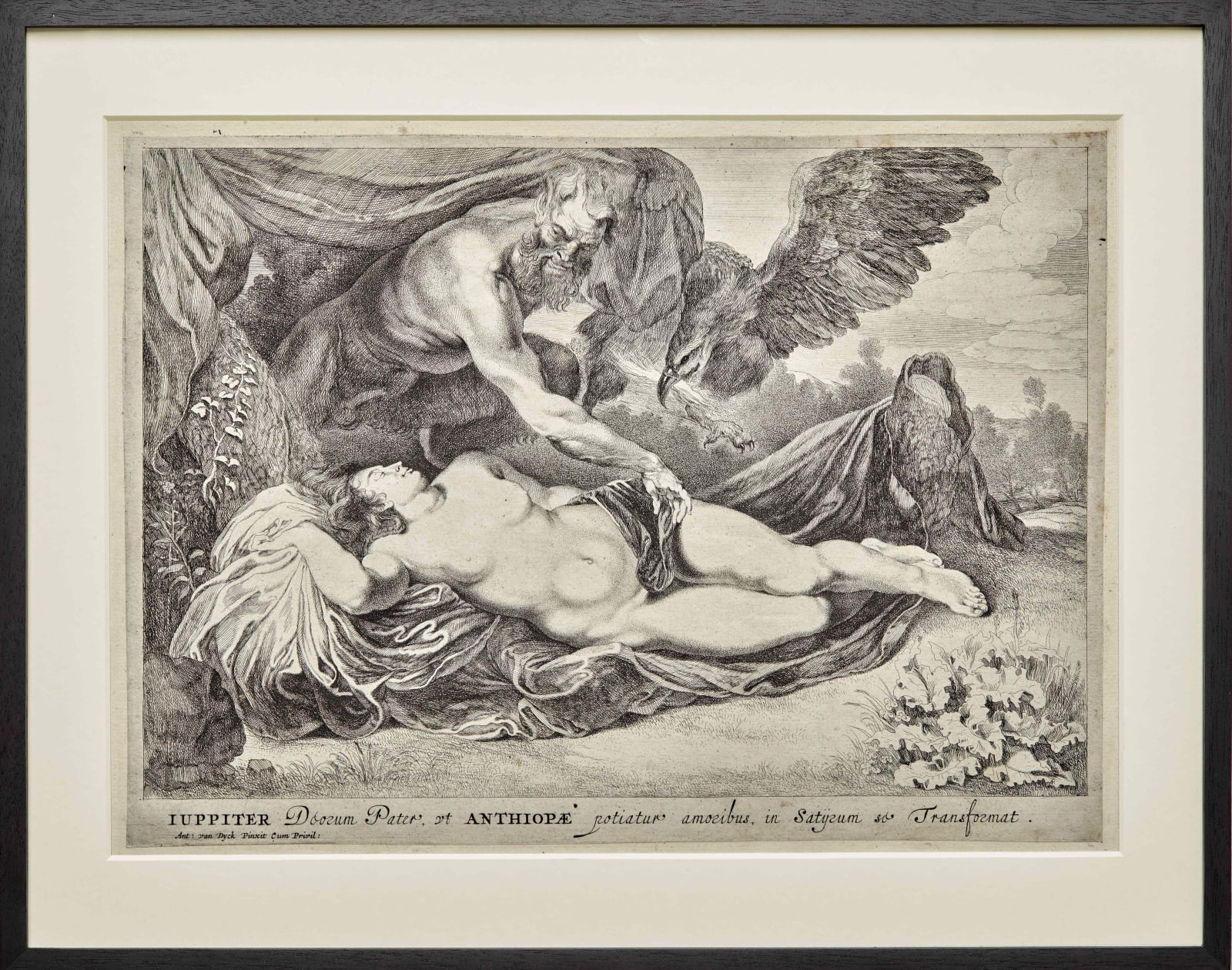Pieter van Sompel (Antwerp 1600 - ?) after Anthony van Dyck (Antwerp 1599 - 1641 London)
This erotically charged scene presents us with the story of the amorous affair between Jupiter, the supreme god of the Ancient Greeks, and the exceptionally beautiful amazon Antiope. In an attempt to seduce Antiope, Jupiter guised as a satyr and approached Antiope while she was asleep. In the present composition, which is based on a painting by Anthony van Dyck, we witness the very moment that Jupiter is about to lift the drapery covering Antiope’s pudenda.
The story, taken from Ovid’s Metamorphoses, has multiple layers; while the act of Jupiter was most certainly considered reprehensible during Van Dyck’s time, and as such works depicting it contained a strong moral message, the story also stood for biological fertility, associated with abundance and material well-being. Throughout art history the story has been treated by the greatest artists; it was already depicted in Roman mosaics and later by artists such as Rembrandt, Jean-Antoine Watteau and Picasso.
Literature
The New Hollstein 622 (first state of three).


